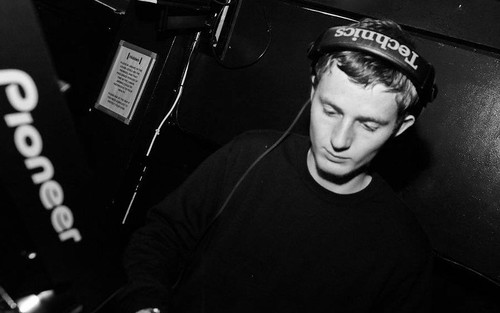Live at the Barbican Centre // Alva Noto and Ryuichi Sakamoto

Ryuichi Sakamoto and Carsten Nicolai, aka Alva Noto, first met around 1997. It was something of a chance meeting, while Nicolai was on his first trip to Japan. Following an initial remix from Nicolai, the collaboration lead from to album after album – in total, they have written five LPs together, and toured extensively. Their work came to a halt between 2011 and 2015, in part due to Sakamoto's battle with cancer, but also as they felt their collaboration creatively exhausted.
Fast forward to 2016 and they were united once again, enjoying the shine of having composed the soundtrack to BAFTA-winning survival epic, The Revenant. The reunion marked a clear departure from their previous work sonically, and in an interview earlier this year, Nicolai revealed that they had decided to "step into completely new territory". Subsequently, they produced Glass, recorded in Philip Johnson's Glass House. The album is largely improvised, Sakamoto and Nicolai more or less trading places as Nicolai experimented with traditional instruments while Sakamoto took control of electronics, using contact mics to harness the natural reverberations of the structure.
It was this work which provided the inspiration for the duo's recent performance at the Barbican Centre, Two. While the improvisational aspect was curtailed to some degree, there were indeed moments of complete role-reversal. Nicolai began the performance with string bow in hand, generating eerie resonances from a set of crotales. Sakamoto complemented these textures, leaning into his piano casing to generate an array of oddball sound effects. At one point he produced a sheet of cellophane, crumpling it next to the microphone in a piece of Masayoshi Fujita-style live musique concrète.
For the most part however, the duo stuck to their usual placements, Nicolai standing stoically behind a laptop mounted podium like a runaway Kraftwerk member, while Sakamoto sat painting delicate, otherworldly piano melodies. Nicolai has always had a propensity for sounds at the extreme ends of the frequency spectrum, and this evening was no different. But between the crevasse-dwelling low-end, ultrasound hums and tinnitus-pitch sine tones, Sakamoto spattered the sonic canvas with graceful, introspective motifs, meandering with supple fluidity.
They sat at a distance through the performance, almost appearing to be working in isolation. In a sense, perhaps they are. Indeed, there has always been something paradoxical about the collaboration – on the one hand, Nicolai creates sounds which feel cold and scientific, while Sakamoto's compositions are tender, dreamlike and richly emotive. It's a magical blend of clinical and spiritual all at once — an arctic warmth if you will.
Check out some footage from their performance at The Glass House, below.
- Published
- Jun 23, 2018
- Credits
- Words by Theo Darton-Moore
